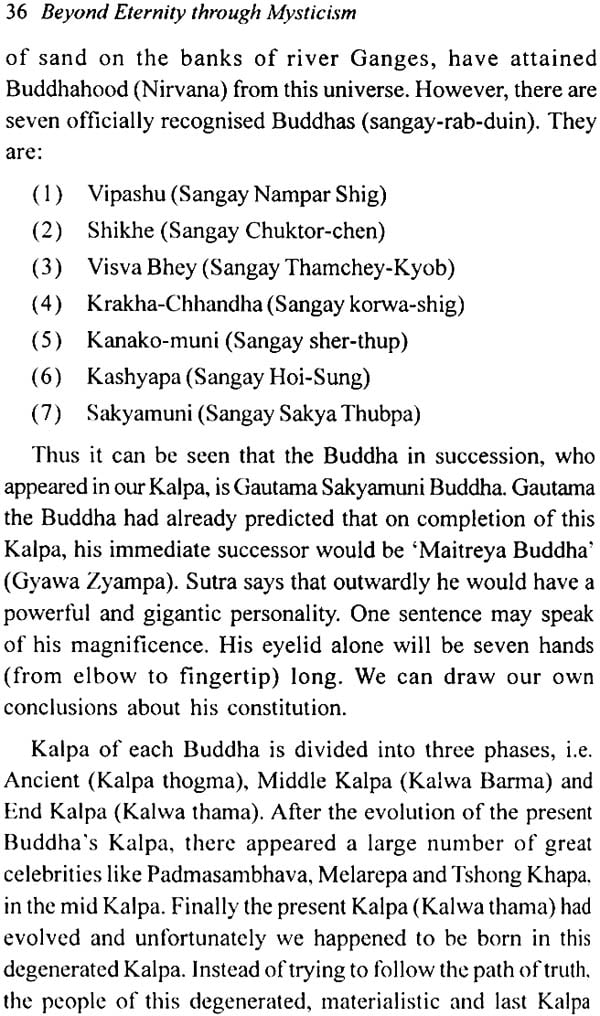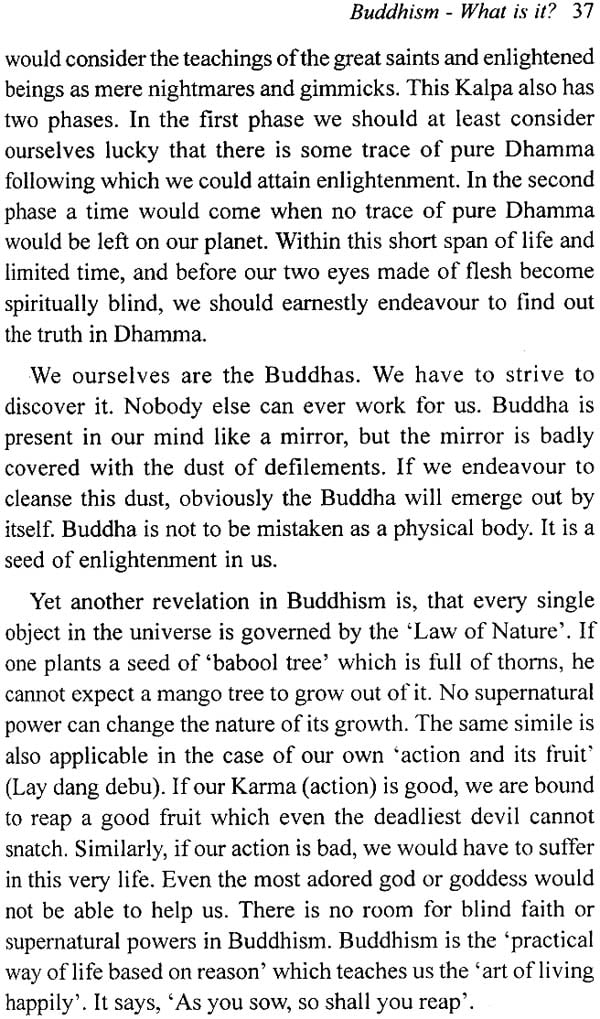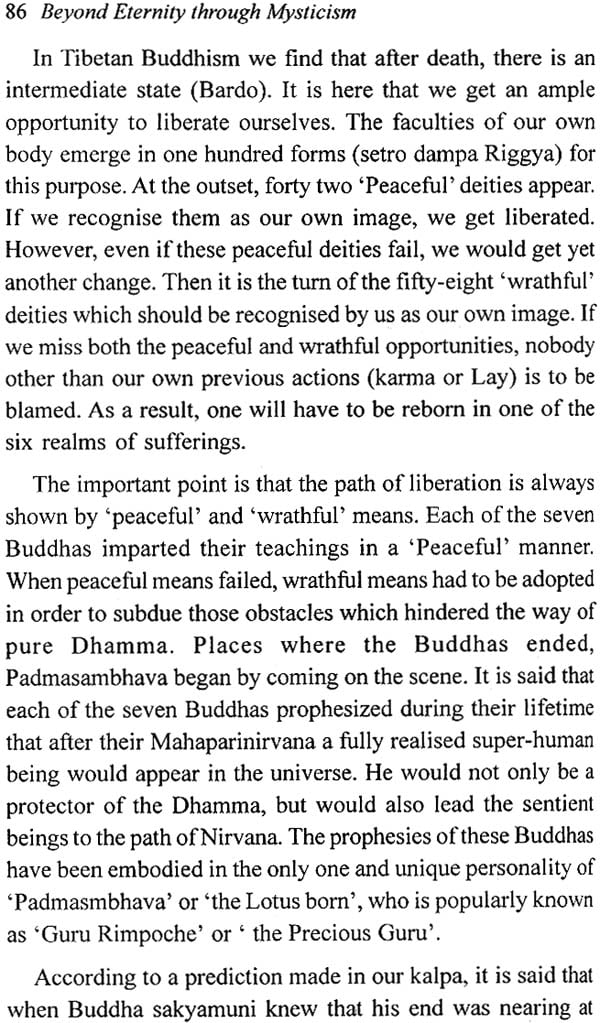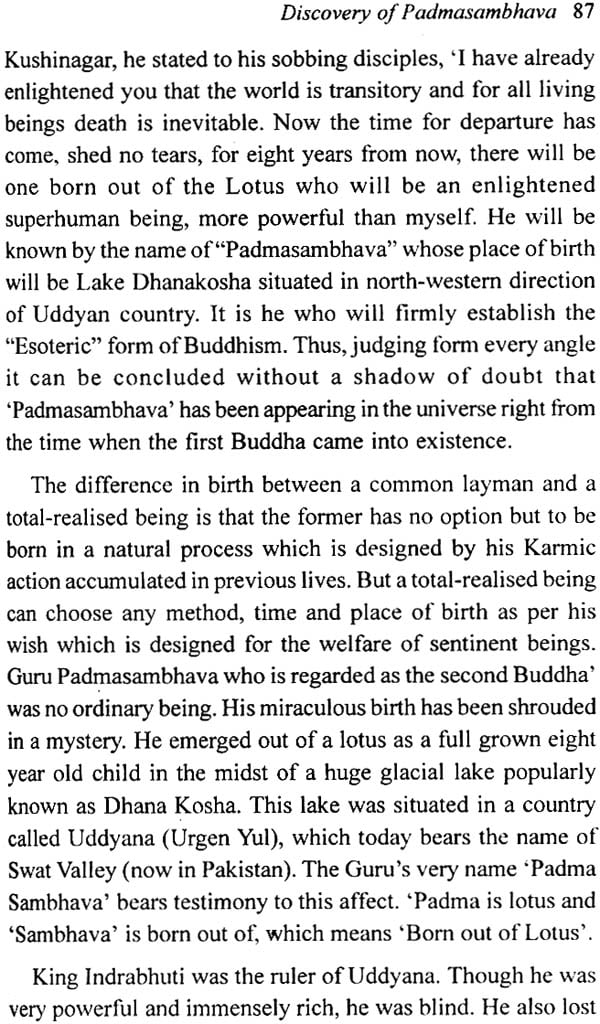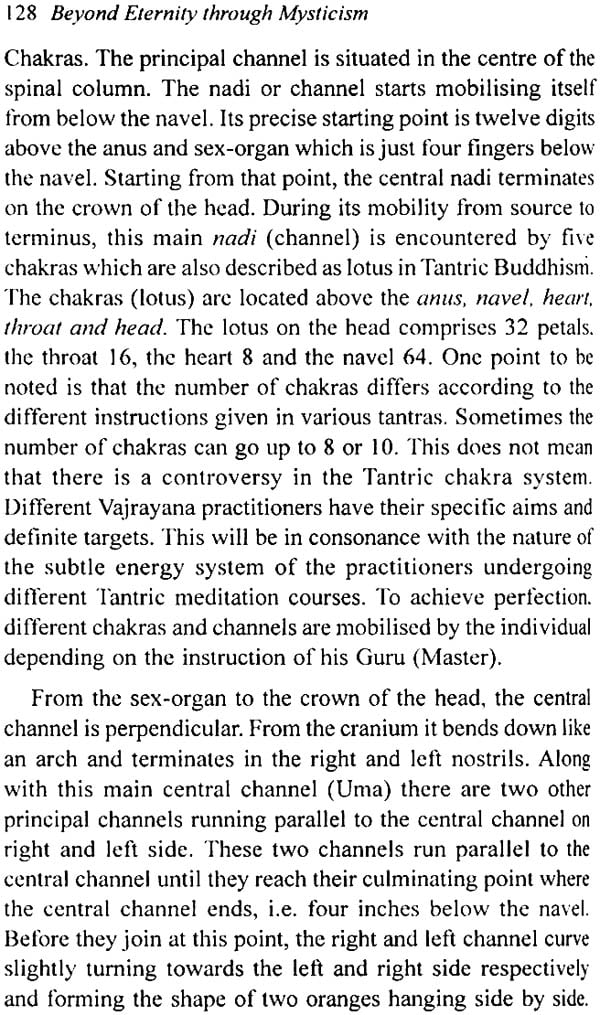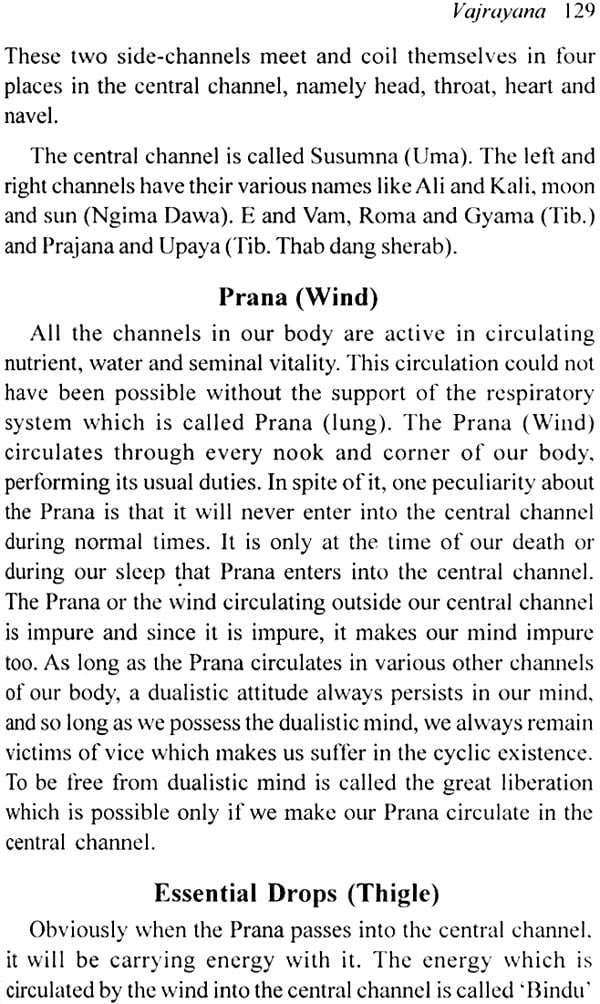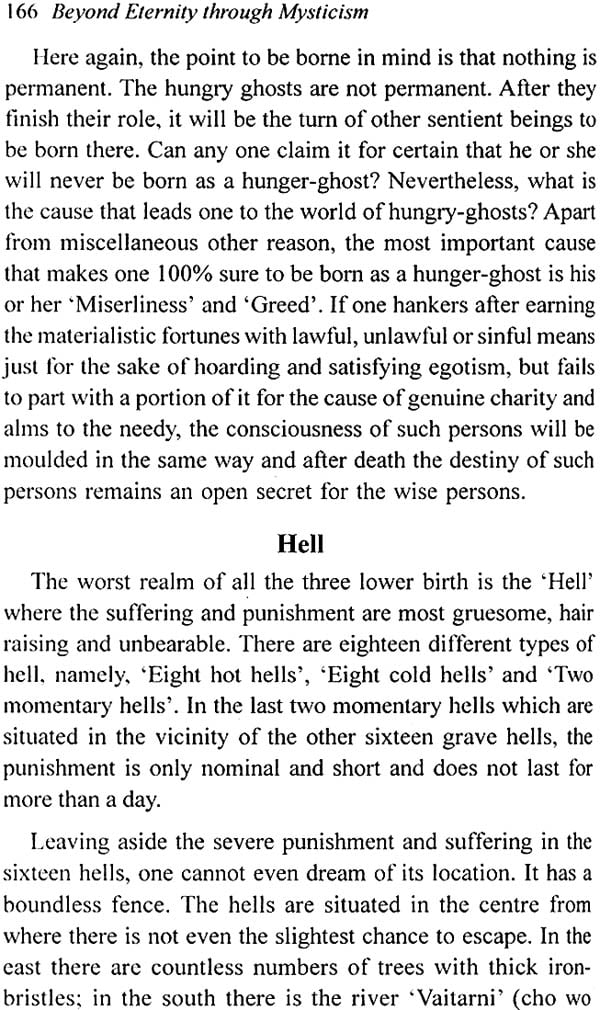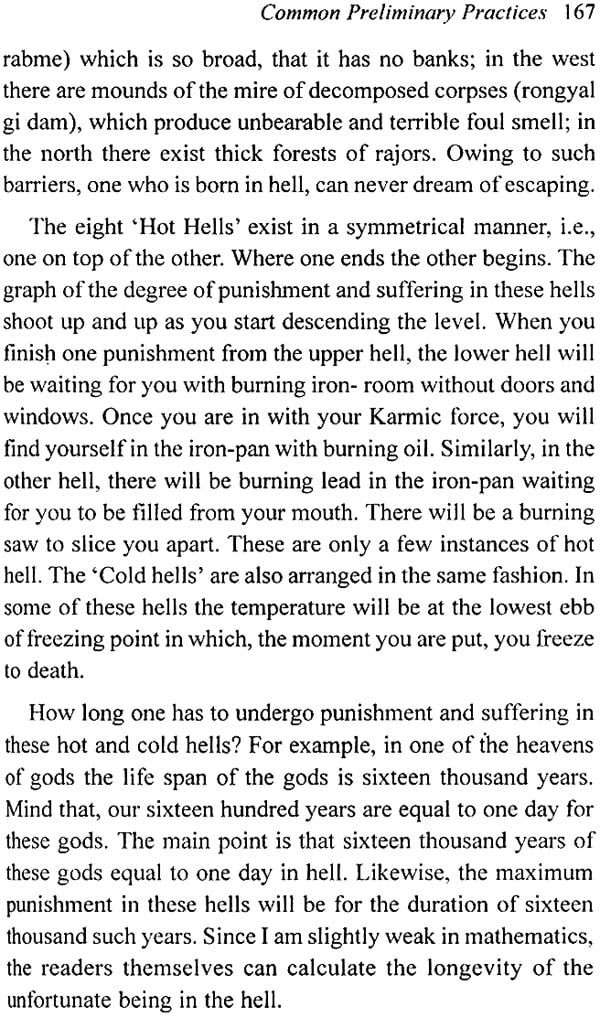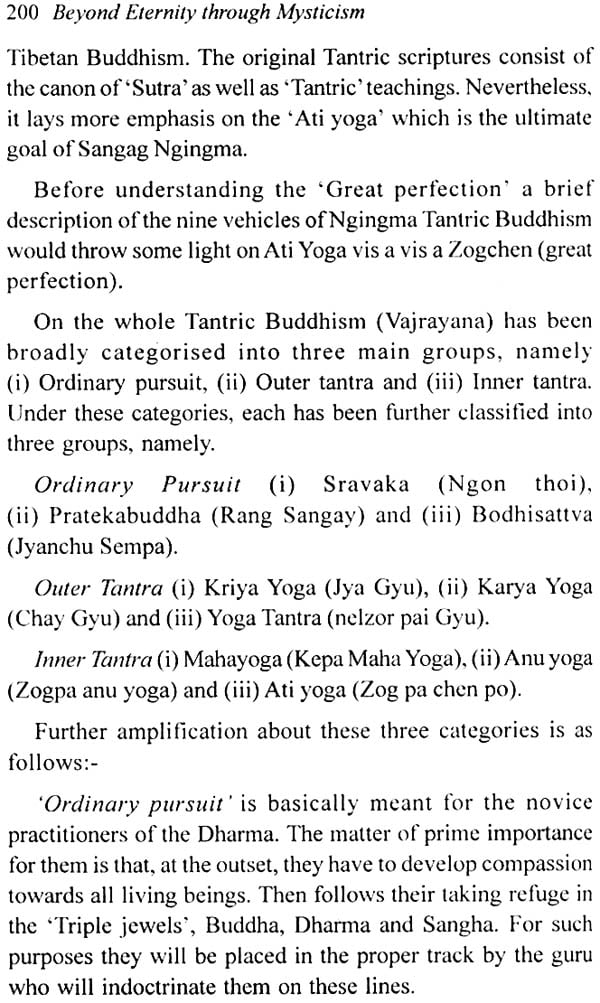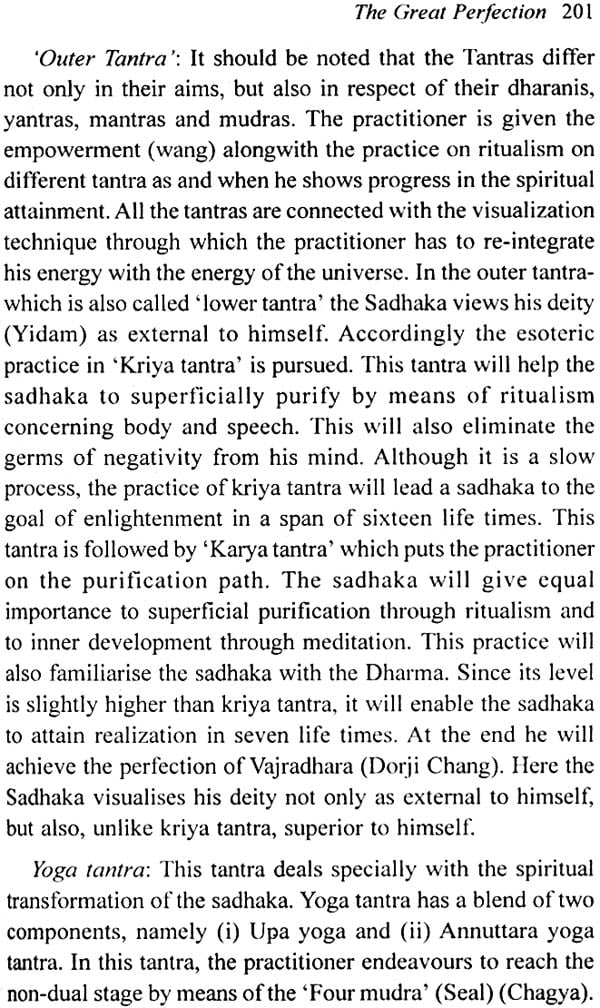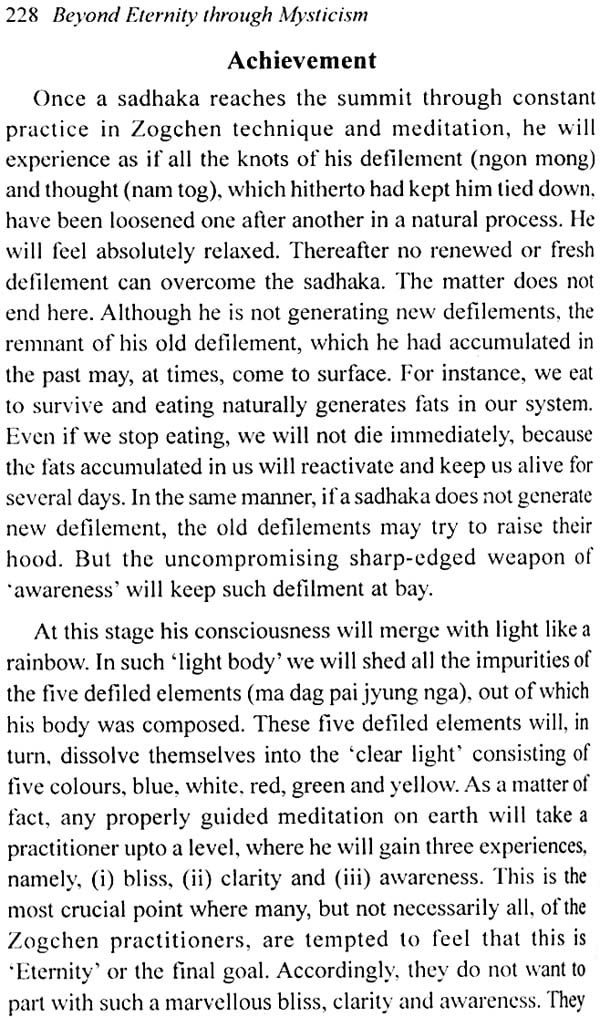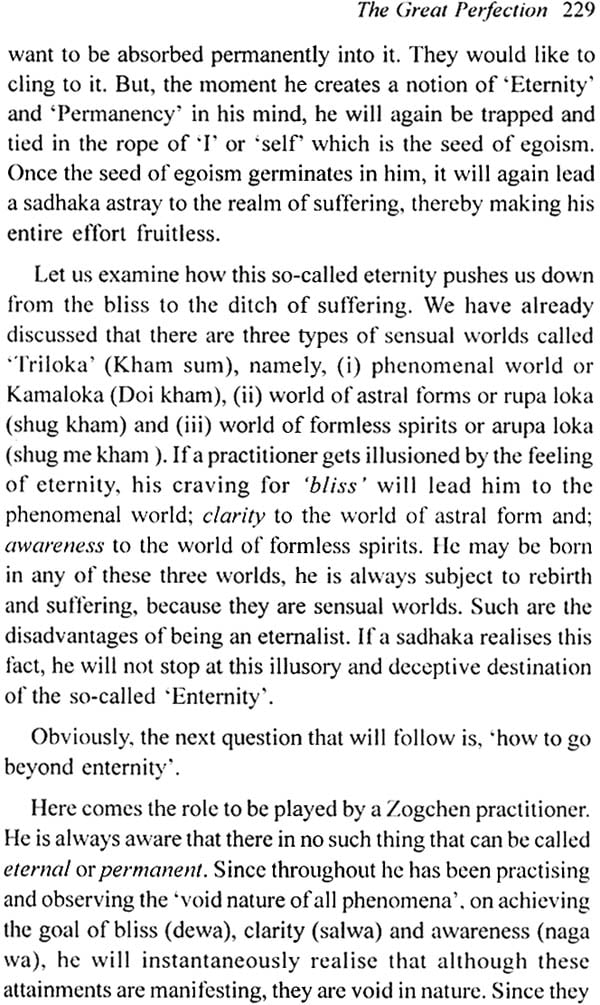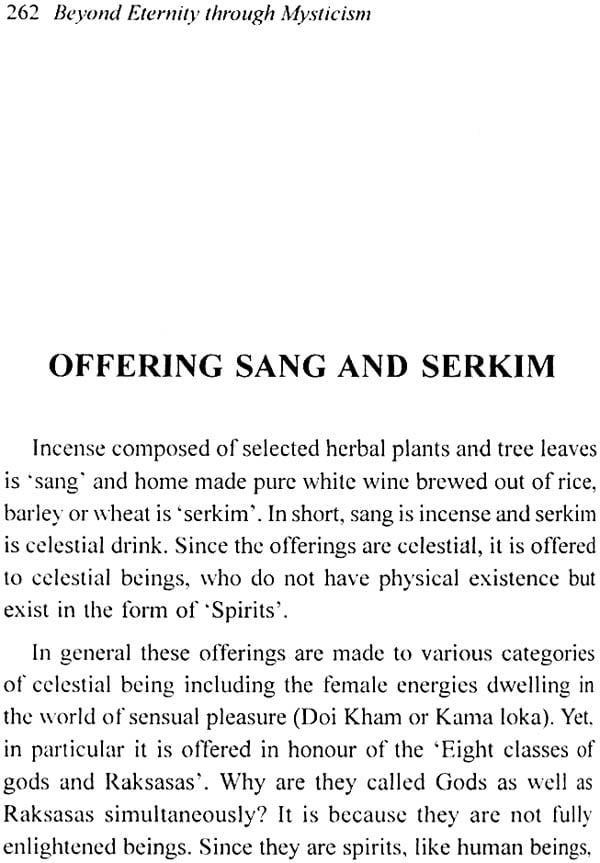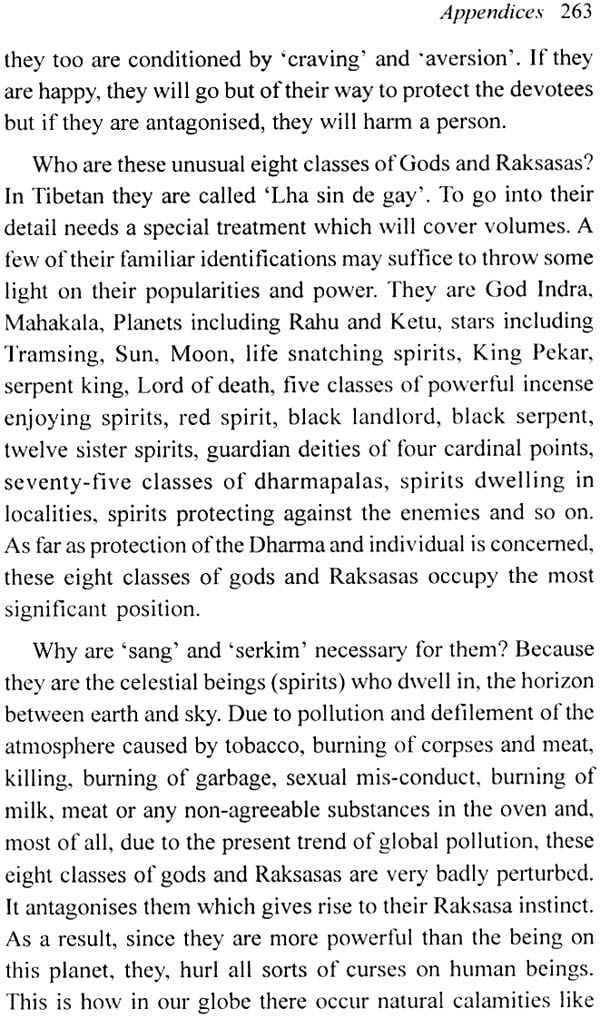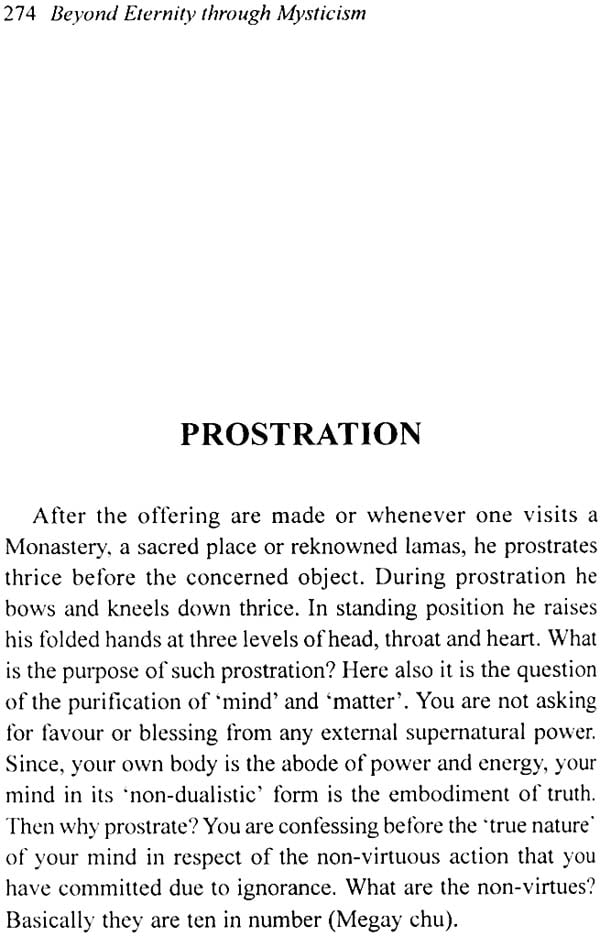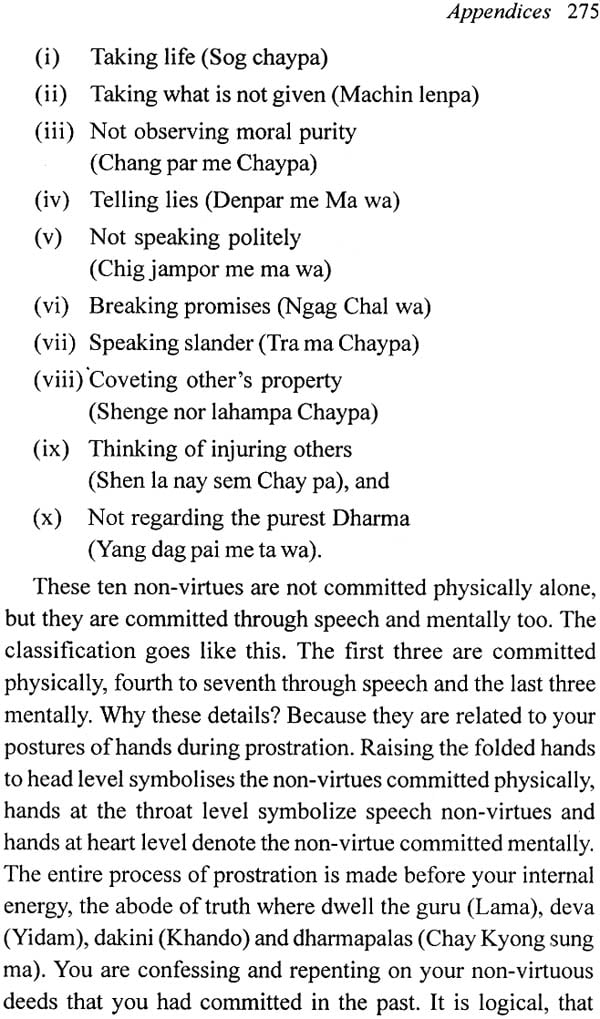
Beyond Eternity Through Mysticism
Book Specification
| Item Code: | IDL140 |
| Author: | Lama Thinley Dorjey Bhutin |
| Publisher: | Paljor Publications Pvt. Ltd. |
| Language: | English |
| Edition: | 2007 |
| ISBN: | 9788186230558 |
| Pages: | 285 (6 B/W Illustrations) |
| Cover: | Paperback |
| Other Details | 8.5" X 5.5" |
| Weight | 310 gm |
Book Description
Foreword
The pleasant duty of writing ‘Forewords’, introducing authors to the readers, falls to the lot of Vice-Chancellors very frequently. However, among the many books for which I have written Forewords the present piece of writing by Lama Thinley Dorji Bhutia, Ph.D, is rather unusual. In this book the author has recorded his own experiences as a Lama, as well as the theoretical and practical basis for the spiritual exercises Lamas undergo.
Although these mystical experiences and theories associated with them are well beyond my scan, they have an undeniable interest which I share with the curiosity of the uninitiated. Lama Thinley Dorji Bhutia’s birth in a family which served as Lamas for countless generations virtually foreordained that he would accept Lamahood. He was initiated as a Lama at Aloobari monastery in Darjeeling fifty years ago, when he was nine years of age. Thereafter followed thirteen years of training in the monastery. In 1960 he took up a job as a teacher of Tibetan language which was followed by his assignment in the capacity of a Professor in Tibetan at the N.D.A., Poona. This career path led him to an important position as a Director of a Government of India institution. His contacts with Bhikshus, Lamas and Buddhist scholars remained alive and he continued to practice meditation and occasional ‘retreat’ as required in Lamahood. The author developed a research interest in the theory of mystic experiences in the school of thought he was initiated into. The product of his experiences and research is this book.
Whatever may be one’s personal attitude to these mystic religious experiences, there is no doubt that varieties of such Buddhistic religious beliefs and practices constitute important elements in the cultural personality of some of our people and that of our neighbouring countries. I have not been to Tibet but I have seen for myself the enduring presence of Buddhism in the cultural scene today in many parts of China and Japan. That would be equally true of Burma, Ceylon and several South-East Asian countries as well. It is, therefore, important to comprehend approaches to human life and death represented by works such as the present one, irrespective of the reader’s own belief system. For these reasons I believe that this book merits attention.
Introduction
Mysticism is the spiritual apprehension of the truths which are beyond the understanding of dualistic mind. It is the doctrine of an instantaneous spiritual intuition of truths which transcend ordinary mind to the realization of the ‘ultimate truth’. Most of all, ‘Mysticism is the search of divine truth within our own mind.’
Mind is the foremost criteria in mysticism. Hypothetically let us presume for a moment that we are all set for a voyage to discover this divine truth within the mind. The first hurdle that we come across is ‘where is the mind to search?’ Does the mind have any dwelling place so that we can sneak into it? Does it have any shape or form so that we can find and catch it? Do we have any idea as to from where does the mind come, where does it stay and where does it go? The answer to all these is ‘No,’. If so, then how can we search for a thing which does not exist at all? Since mysticism is correlated to mind and as the mind does not seen to exist, logically it can be established that the so called mysticism is nothing but a fantasy. So, we can surmise that ‘mind searching’ is no better than “wild goose chasing”. This give rise to yet another doubt. What about those great, spiritually developed personalities who have preached the gospel of mysticism? To set our doubts at rest, we should compromise with mysticism, which can then open the gateway of our mind by means of ‘meditation’. In a nutshell, one can reach ‘Beyond Eternity’ with the power of ‘Meditation’ which is deeply rooted in ‘Mysticism’.
Meditation is the means to reach the goal of “ultimate truth” which is unique and universal. Meditation and ultimate truth are thus identical inspite of the fact that they have been interpreted in various ways by different faiths. After all, gold is gold although it bears various nomenclatures in different languages. So also meditation is meditation though it is practiced in different ways, depending on one’s faith.
In this text I have endeavoured to project the facts about mysticism from the angle of Tibetan Buddhism.
It is a natural phenomenon that as soon as a particular faith makes its entry into our mind, fanaticism also conveniently makes room for itself in our heart. Nevertheless, if one analyses with a broader outlook, he will find that faith cannot have precedence or edge over humanity. As faith is of later development, humanity is our main concern. Unprofaned by any label of faith, let us be rational and contemplate as to how we came to this universe and where will be our destination after death. But, with our so-called defiled mind, will we be in a position to analyse this mystery about birth and death? Impossible. Then what is the next alternative? Mysticism is the only way to explore this possibility. Again, mysticism devoid of meditation is spineless. Since both are identical, it is meditation that will open our divine wisdom’s eyes through which we can clearly visualize the true nature of our mind which, in turn, will lead us ‘Beyond Eternity’.
I have completed fifty one years of my life as a Lama. I was born in Yolmo community who had original migrated from mainland Tibet to its southern part called Yolmo which now comes under the kingdom of Nepal. The urge, objectives and motivation that prompted me to compose this text could be that owing to the law of karmic reaction I happened to be born in a family in which entire generations had been devout Lamas. So far as my memory goes back, my father, grandfather, great grandfather and others earlier, were all Lamas. It is said that my great grandfather, Sangay Lama, had developed such a tremendous miraculous power through his meditation that he pierced a ‘Phurba’ (a triangular tantric instrument) in a rock from which water started flowing and the said spot can still be seen between Tibet and Nepal. In fact, a deeper analysis will prove that the lamaic lineage of our family leads upto the summit where it reaches Guru Padmasambhava.
Since it was a set tradition in our family that at least one son has to become a Lama, by virtue of my seniority in age, the Damocles’ sword fell on my head. At the age of nine I was initiated as a novice Lama at Magdhog Monastery in Darjeeling. In my case, one peculiarity was that my parents foresaw that times had changed and like good old days if one studies and confines himself within the four walls of the Monastery, it would not fetch a satisfactory dividend. Keeping this in view, along with my monastic studies, I started getting school education too which ultimately enabled me to go to the level of obtaining M.Phil. and Ph.D. degrees in Buddhist studies.
During my last five decades in the capacity of a Lama, apart from my regular studies, pujas, research work, meditation and retreats, I had been fortunate enough to have most eminent Lamas as my Gurus (masters). At the outset, my Guru was Lama Damay Tshering from whom I obtained three different kinds of initiations (Tib. Wang, lung and Thri) concerning ‘peaceful’ (Tib. Shiwa), ‘expansion’ (Tib. Gepa) and empowerment’ (Tib. wang). If, after receiving empowerment from a Guru, one does not complete the follow-up action by confining himself to a retreat (meditation) for a considerable length of time, such empowerment loses its value and significance. Thus, after my first Guru’s empowerment, I rigourously underwent three months’ retreat in seclusion. Perhaps duet to unshakable faith in my Guru, clubbed with his blessings, I had the golden opportunity to proceed to Kalimpong in the mind-fifties where for three consecutive days the empowerment in respect of Bodhisattva Avaloke-teswara’s (Tib. Chenresi) ‘Mani’ mantra was bestowed upon me by no less than the living god His Holiness the XIV Dalai Lama, who had then come to India on a short visit from Tibet along with His Holiness Panchen Lama. Subsequently, as a follow up action, I underwent yet another month’s retreat in solitude. Then came my third Guru, Jamyang Khenche Choki Lodoi, popularly known as Jamyang Khenche Rimpoche, who had come from Tibet and settled in Darjeeling for a short while in the mid fifties. He was such an outstanding Rimpoche that no word is sufficient enough to describe his profound enlightenment and competency. I received the empowerment of ‘Vajrapani’ (Tib. Chana-Dorje) from him which was again followed by yet another month’s retreat in seclusion. ‘Man proposes and God disposes’. My lifelong cherished desire to have Delgo Khenche Rimpoche as my Lama was fulfilled. He was the foremost non sectarian Rimpoche of our time who was a thoroughly proficient scholar in meditation Besides having many eminent Rimpoches and Lamas as his disciples to his credit, if I am not mistaken he had also been the Guru of His Highness the XIV Dalai Lama in certain respect. I received the empowerment of ‘Zogchen’ from him which again was followed by one month’s meditation. With this I think I have achieved everything which my intuition said that I ought to have.
In addition to the Living God and most eminent Rimpoches as my Gurus, I came across yet another learned and accomplished Lama, popularly known as Taklung Chetul Rimpoche. Although I have not had the opportunity to receive any empowerment from him, he had been my guide and philosopher in many respects. In between, in the early seventies, I had the chance to undergo thrice a very fruitful meditation course called ‘Vipassana’ at Igatpuri under the able guidance of one of the most enlightened Gurus of our time, Ven. S.N. Goenkaji. Furthermore, it is my good fortune that I found myself in the midst of learned Lama friends like Ven. Maan Kazi Lama who is a perfect recluse, Kachen Dharma Lama of Tashilumpo from whom I learnt Tibetan astrology and Gesay Wangchook La of Thromo who is a master in Buddhist philosophy as well as dialectical discussion.
In spite of the fact that these gurus and scholarly friends who opened the gateway leading to the treasure of knowledge for me, with due respect and apology. I have to say that, as far as possible, I have tried to avoid quoting them directly in this text, the reason being that quotations may be viewed by some as second hand information or hearsay. Nevertheless, if at all my description is given, it is directly taken from the original source.
The main purpose of composing this text is to compile firsthand information concerning my last fifty one years of experience in the field of meditation, research and other allied studies.
If a person who does not know swimming is asked to swim in deep water, it will prove for the first time a fatal exercise, he may get lost any the very effort to grasp the idea of mysticism will be futile for him. Keeping this in view, prior to dealing directly and instantaneously with mysticism, I have tired to get the readers acclimatized with the system and step by step attempted to reach the topic of final realization i.e. ‘Beyond Eternity through Mysticism’.
I shall feel that my selfless devotion in composing this text, which took seven long years to complete, I bore desirable fruit if it serves as a stepping stone or springboard for an individual or sentient beings as a whole to show them the path of ultimate truth. It is hoped that this book which has malice towards none will be read in its true spirit.
About the Author
Dr. T.D. Bhutia is a Yolmowa and was born in 1933. At nine he was initiated as a novice Lama of Maghdog monastery, aloobari, Darjeeling. Between 1943 to 1950 he completed his three retreats. In 1955 he received two important initiations and empowerments from His Holiness the Dalai Lama and Zamyang Khenche Rimpoche followed by yet another two retreats. He underwent three Vipassana retreats at Igatpuri. Lastly, on receiving the zogchen empowerment from Dilgo Khenche Rimpoche, he completed his final retreat in Rumtek branch monastery in New Delhi. Simultaneously he completed his high school, graduation, B.Ed., M.A., M.Phil and Ph.D. in Buddhist studies. Besides being a fully qualified lama in meditation and yoga and also having acquired the highest University degree, he started his career as a Tibetan teacher and, later on, appointed as Professor in Tibetan at the Nation’s prestigious Institute at N.D.A., Khadakwasla. Presently he is Director under the Govt. of India.
| Illustrations | iv | |
| Acknowledgement | v | |
| Foreword | vii | |
| Introduction | 1 | |
| 1 | Buddhism and its Three Yanas | 7 |
| 2 | Lamaism | 23 |
| 3 | Buddhism – What is it? | 33 |
| 4 | Mind and Matter | 41 |
| 5 | Meditation | 65 |
| 6 | Discovery of Padmasambhava | 85 |
| 7 | His Renunciation | 93 |
| 8 | Tibet – Prior to the Advent of Padmasambhava | 105 |
| 9 | The Advent of Padmasambhava to Tibet | 111 |
| 10 | Vajrayana | 121 |
| 11 | Common Preliminary Practices | 149 |
| 12 | Extra Ordinary Preliminary Practice | 171 |
| 13 | The Great Perfection | 199 |
| 14 | State between Death and Rebirth | 235 |
| 15 | My Personal Experience | |
| Final Words | 257 | |
| Appendices | 259 | |
| Non-Violence | ||
| Offering Sang and Serkim | ||
| Offering Water | ||
| Offering Butter Lamp | ||
| Significance of 108 | ||
| Prostration | ||
| Bibliography |
